79 Apocrita II
Megachilidae
We will look at two families in the superfamily Apoidea, Megachilidae and Apidae. You may encounter other families from this superfamily in your own collections. Apoidea is a large group of specialized pollen feeders. Most members have various adaptations for collecting pollen, and many are social to at least some degree.
Megachilidae, the leafcutter bees or mason bees, carry pollen in the hairs on the underside of the abdomen, a structure called the scopa. They are important native pollinators in North America, both of native plants and agricultural crops such as alfalfa. Females construct cells, usually out of leaf discs excised from nearby vegetation, in cavities in dead wood or other available materials. Each cell receives a supply of pollen and a single egg. The cell is then sealed, and another cell is constructed next to it. Several species can be encouraged to use nest boxes, promoting pollination of nearby plants. A few species are kleptoparasitic, in which case the scopa is absent.
Megachilidae is distinguished from the next family, Apidae, by the presence of two submarginal cells in the forewing, rather than three in Apidae.
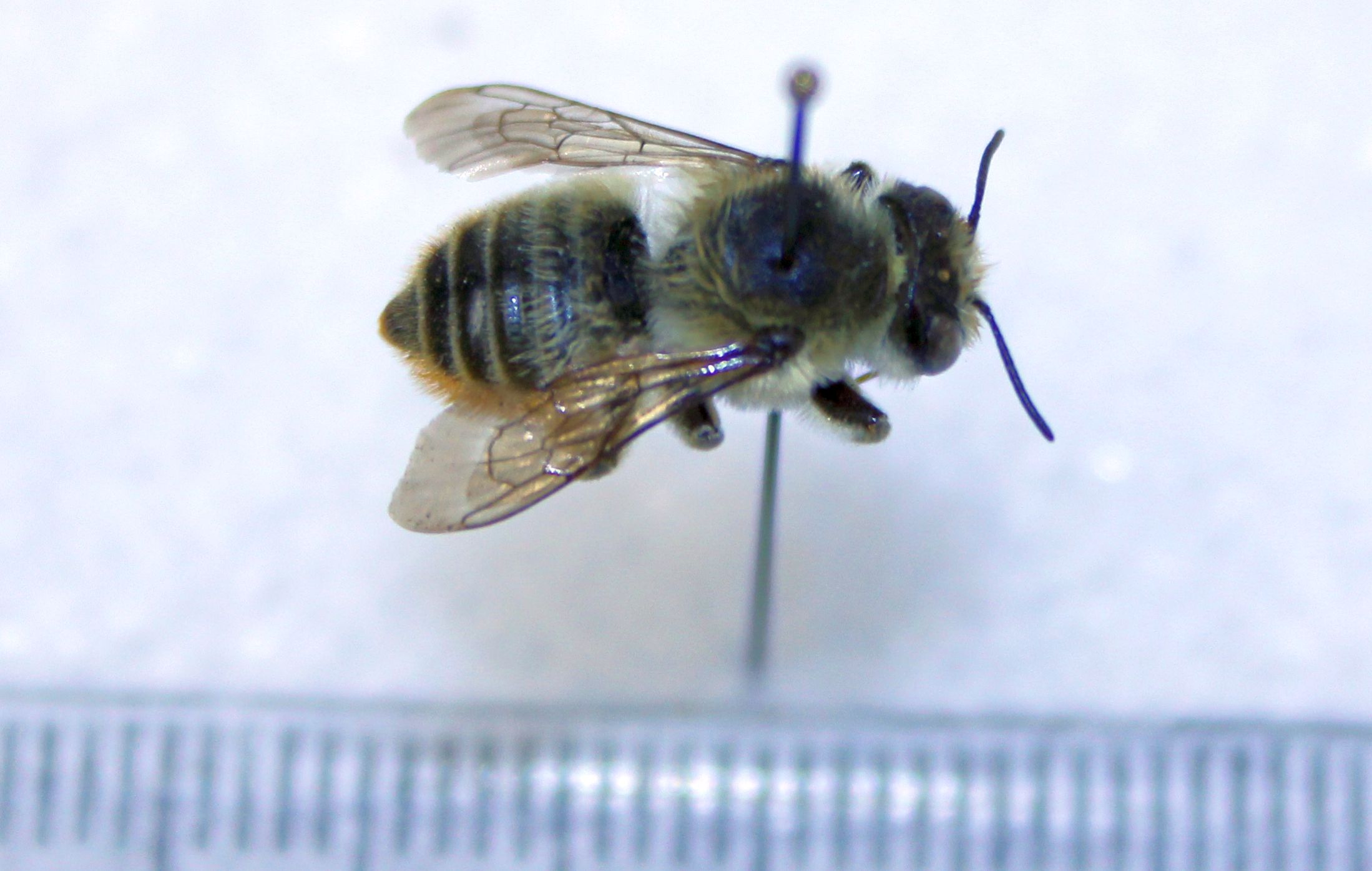
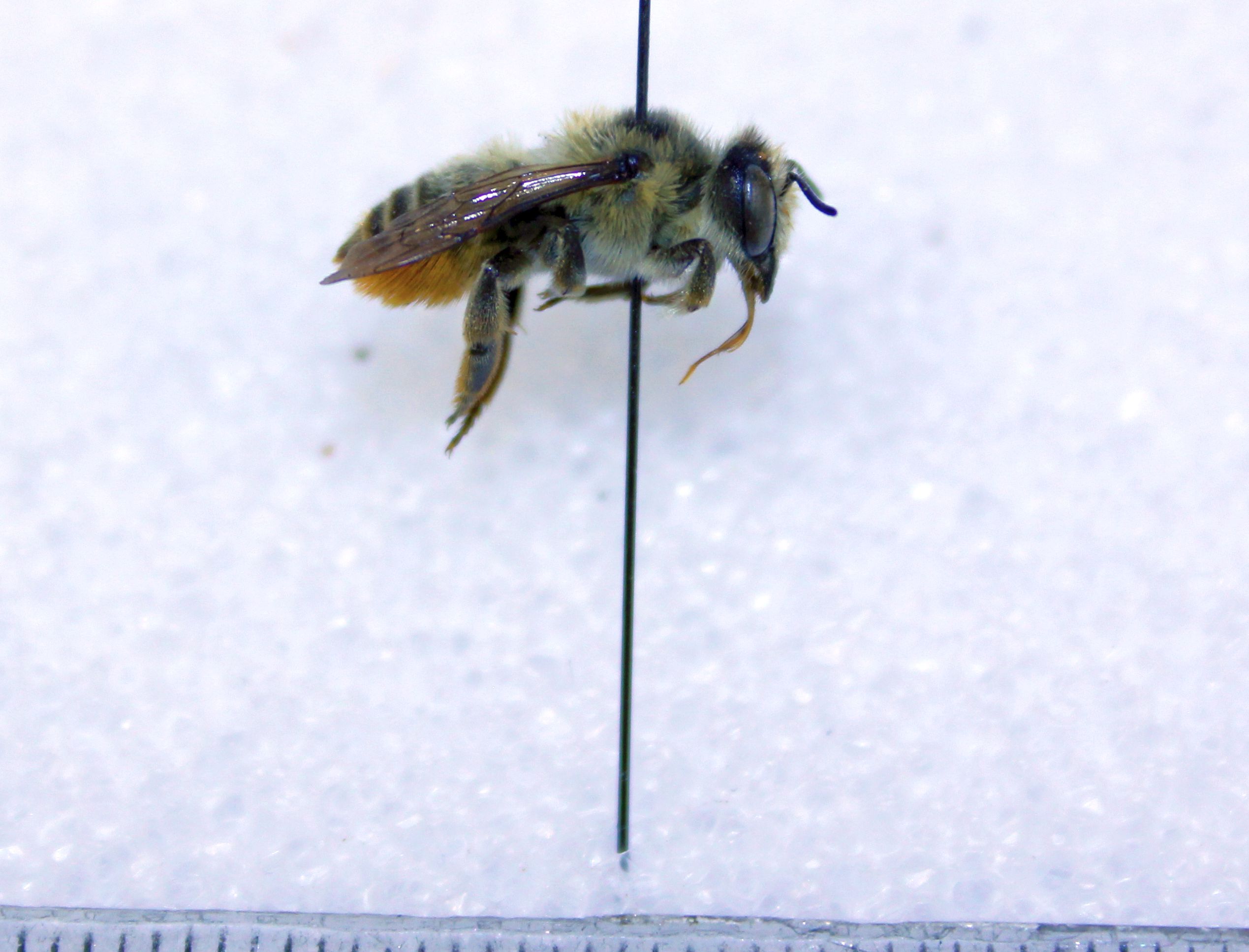
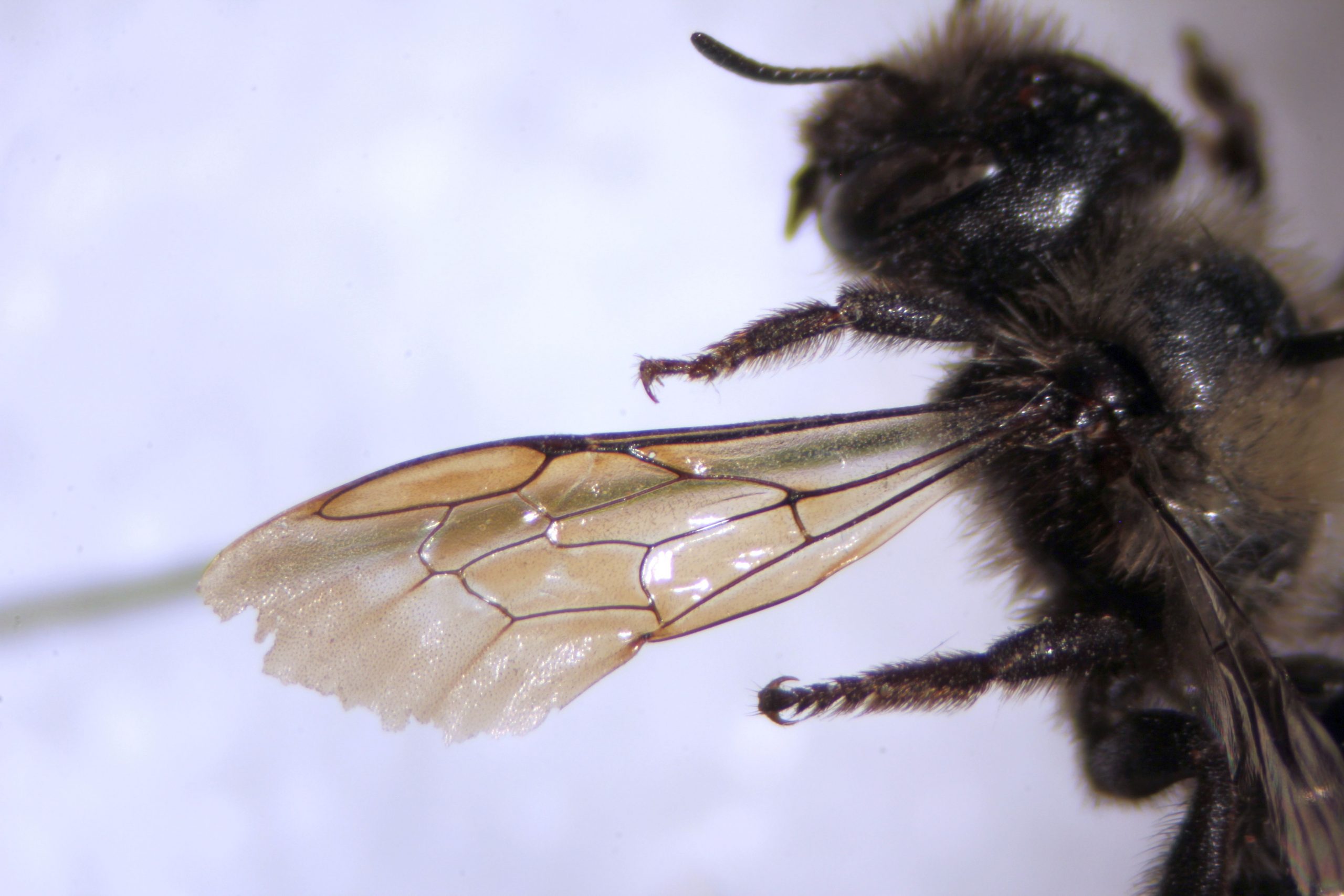
Apidae
The second family from the superfamily Apoidea that we cover is the Apidae, bumble bees and honey bees. This family is generally eusocial, and critically important as pollinators for many plants. Rather than carrying pollen in a scopa, like the Megachilidae, the Apidae use a pollen basket or corbicula. The hind tibia is concave along its length, and has curved hairs that wrap over the concavity. Apidae is distinguished from the Megachilidae by the presence of three (instead of two) submarginal cells in the forewing.
Apidae is divided into two subfamilies. Bombinae, or the bumble bees, tend to be larger and stouter. They are extremely important native pollinators of both native plants and agricultural crops. Some are even semi-domesticated and used commercially to enhance pollination in field crops and in greenhouses. Naturally building nests in the ground or in protected locations, they tend to exploit old mouse nests. Research at Simon Fraser University is investigating the possibility of using mouse urine to improve the colonization of artificial nest boxes. A few bumble bee species are kleptoparasitic and, therefore, lack a corbicula.
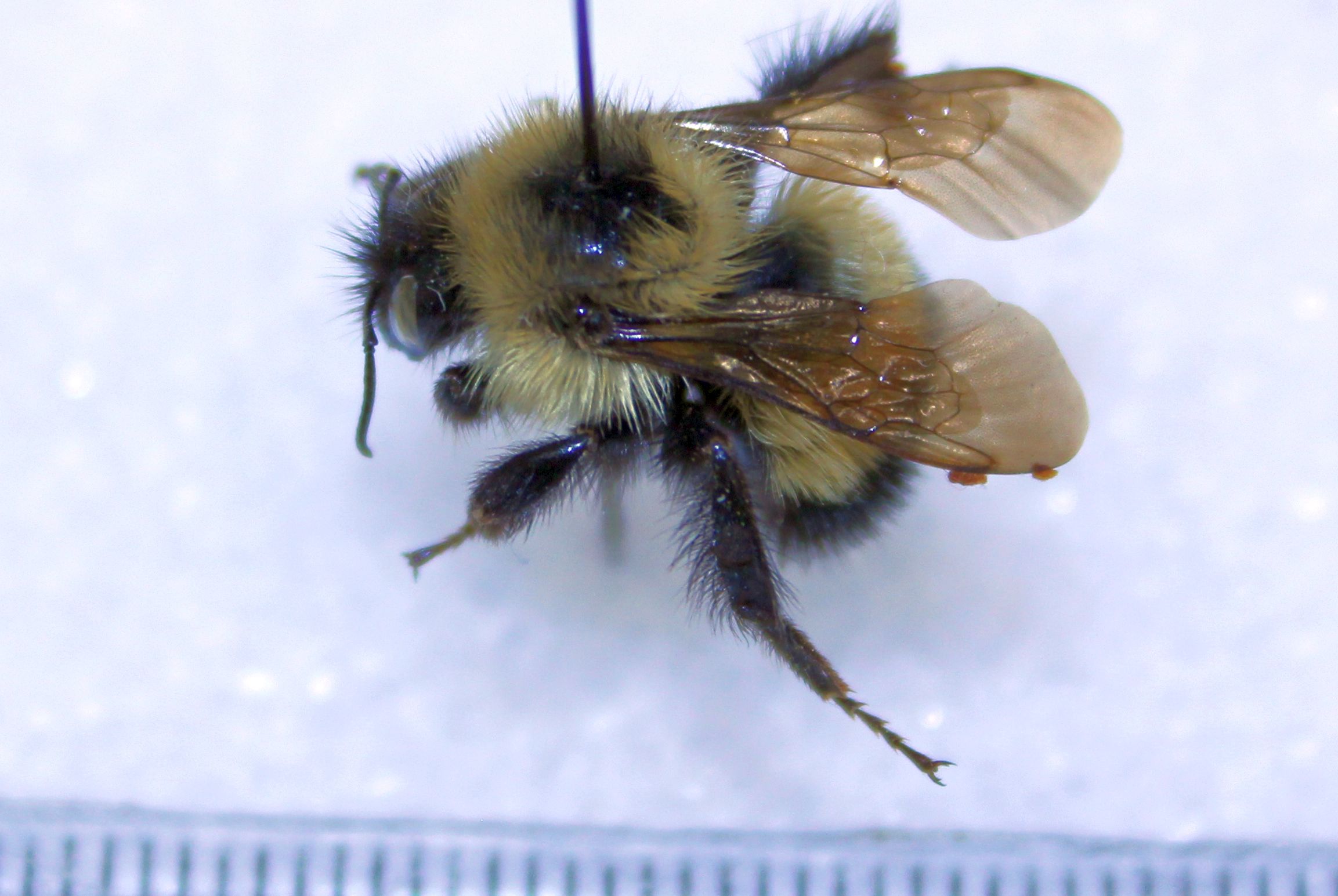
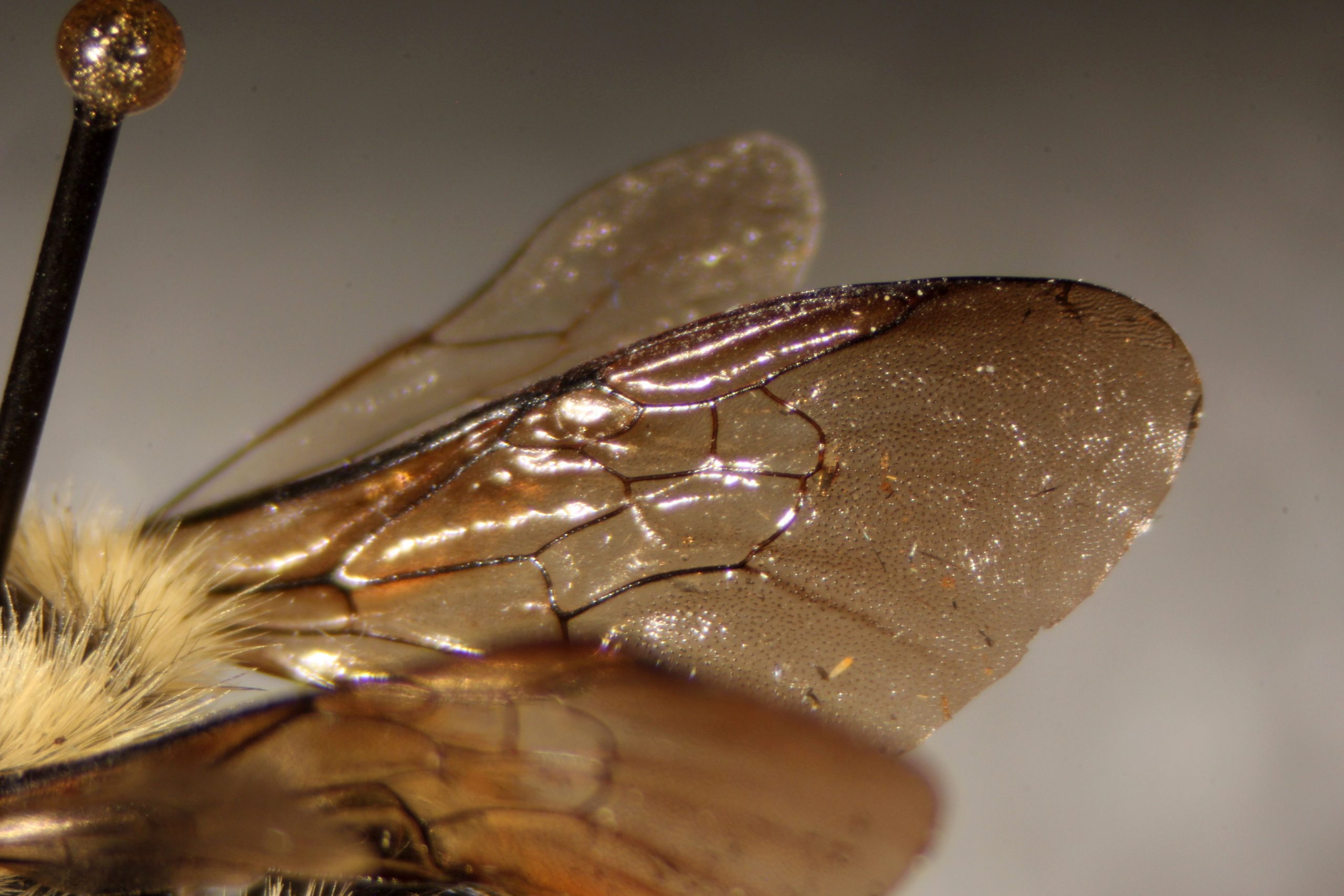
The second subfamily, Apinae, is represented in our collection by a single species: Apis mellifera, the European honey bee. This bee is widely domesticated, both as a commercial pollinator and as a producer of honey, so the species has a worldwide distribution. It is, however, not native to North America.
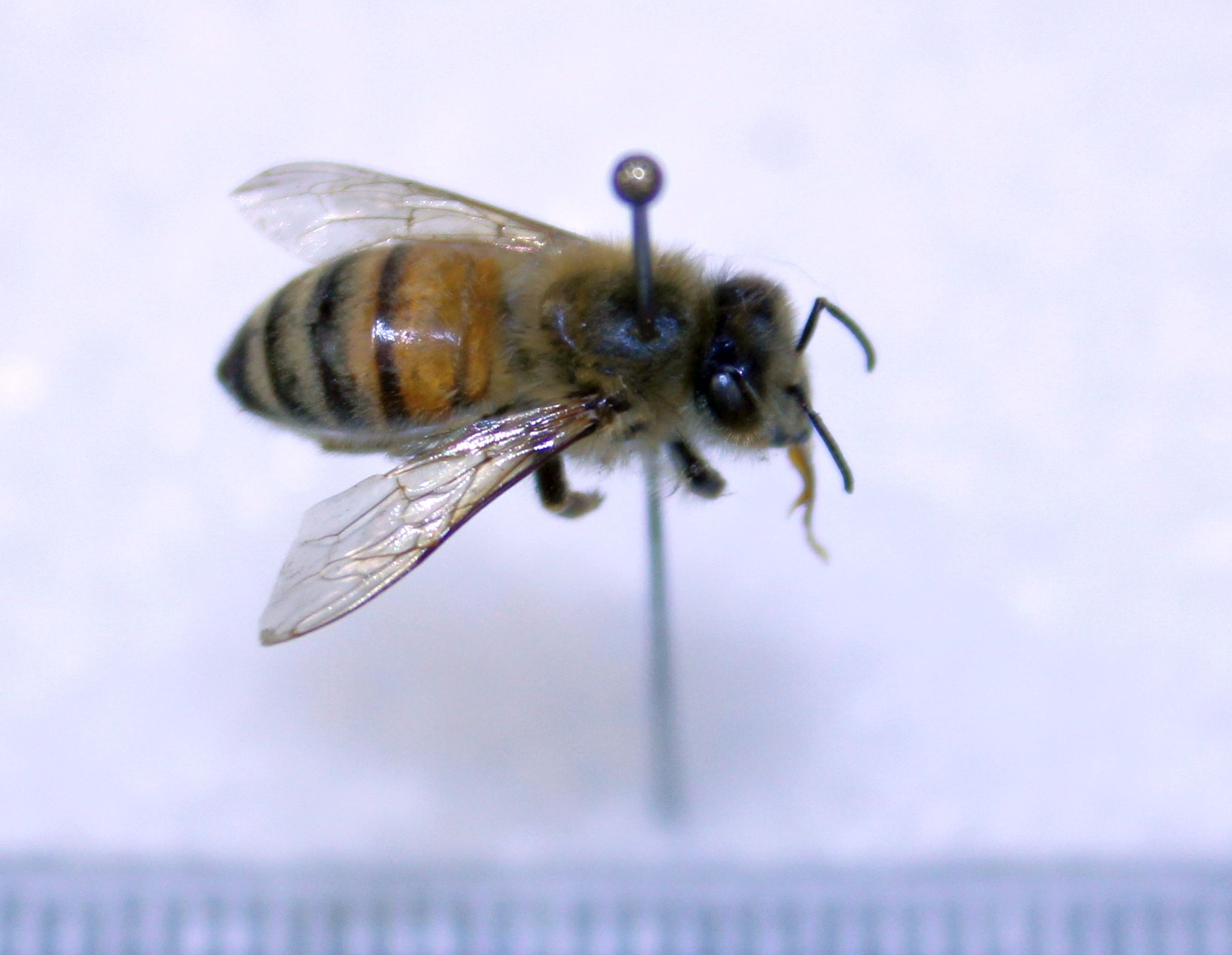
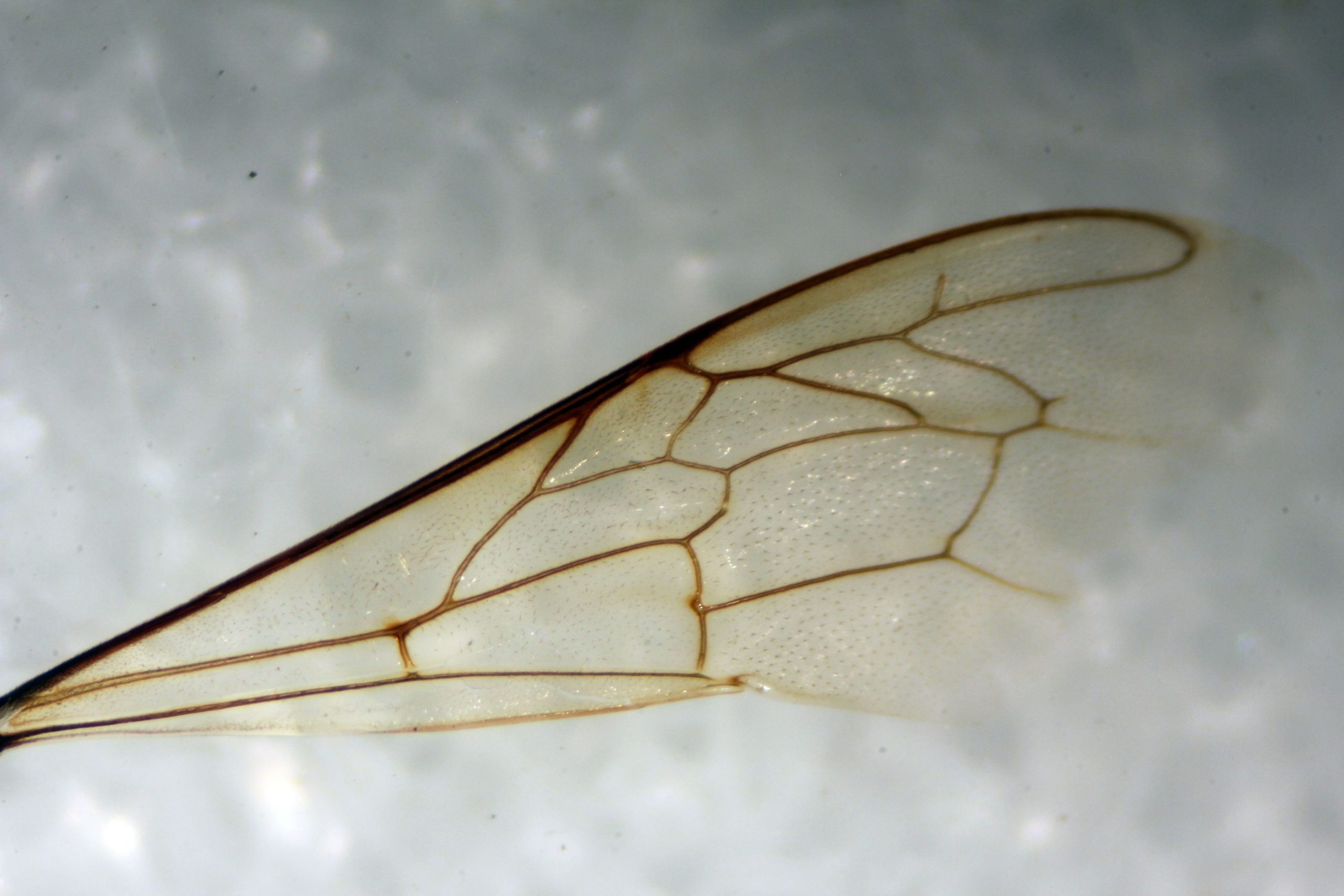
Vespidae
Vespidae are the yellowjackets and hornets. The family also includes several paper, potter, mason, and pollen wasps. Eusociality is common in this family, but some species are solitary. Vespidae are important, and probably underrated, predators on other insects. They defend their colonies vigorously, and have acquired a menacing reputation as a result. The stinger, unlike that of a honey bee, is not barbed, so defending wasps can sting multiple times. As they sting, they also release an alarm pheromone that summons more defenders from the nest. The introduced northern giant hornet, Vespa mandarinia, is in this family.
In North America, only mated females, called queens, survive the winter. The exception to this is Vespa germanica. in Florida. If she survives the winter, the queen will begin construction of a new nest either in the ground or suspended from a tree or other structure. She lays eggs, provisions the nest, and cares for the larvae. Once the first brood has emerged as winged adults, they do the foraging, nest development, larval care, and nest defense, and the queen continues to lay more eggs.
The wings are folded longitudinally when these wasps are at rest. This characteristic makes it extraordinarily difficult to see features of the wing venation in most pinned specimens. The eyes are usually notched on the inner margins. Another helpful characteristic is that the pronotum extends backwards to the tegulae, appearing triangular in lateral view and horseshoe-shaped from the dorsal view.
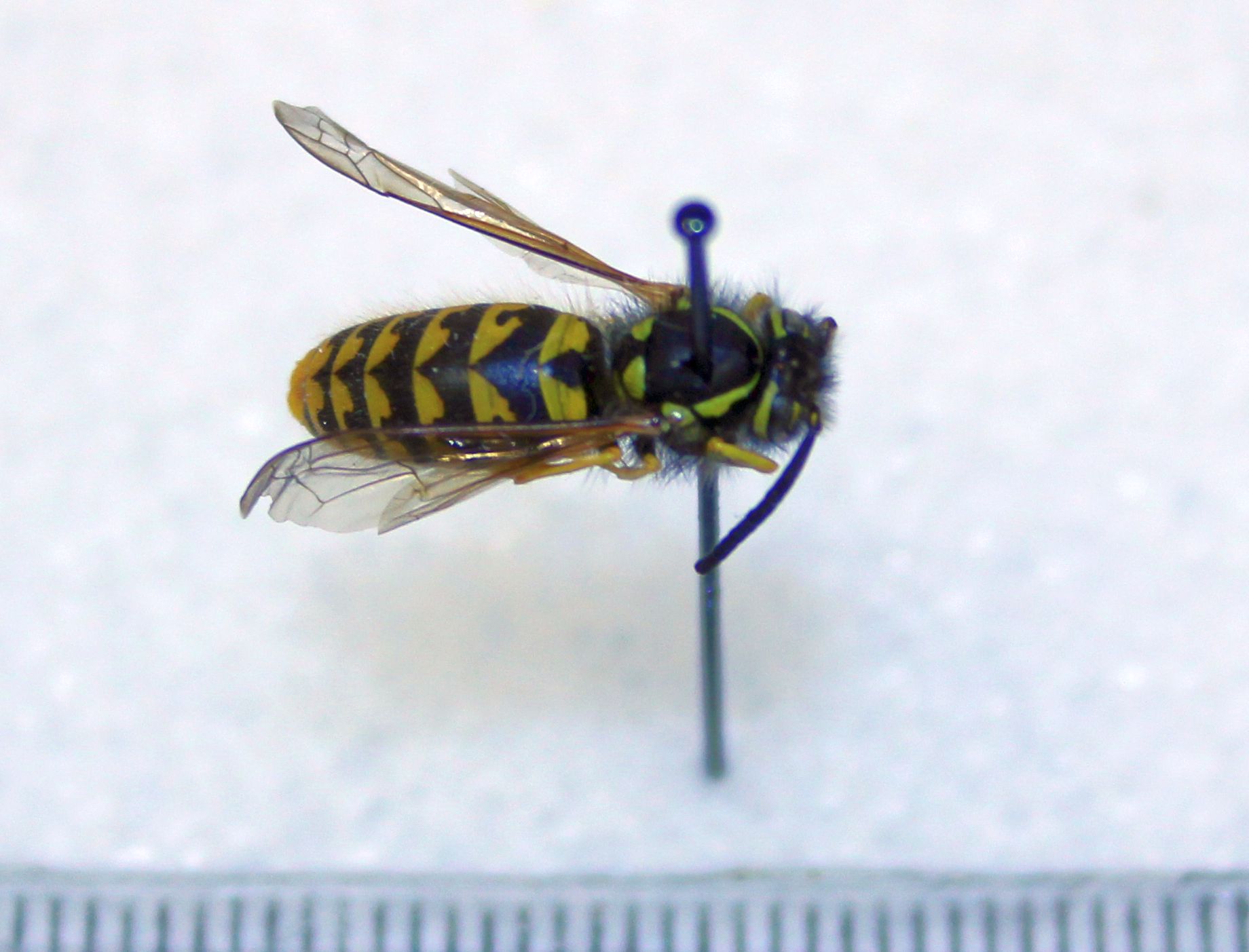
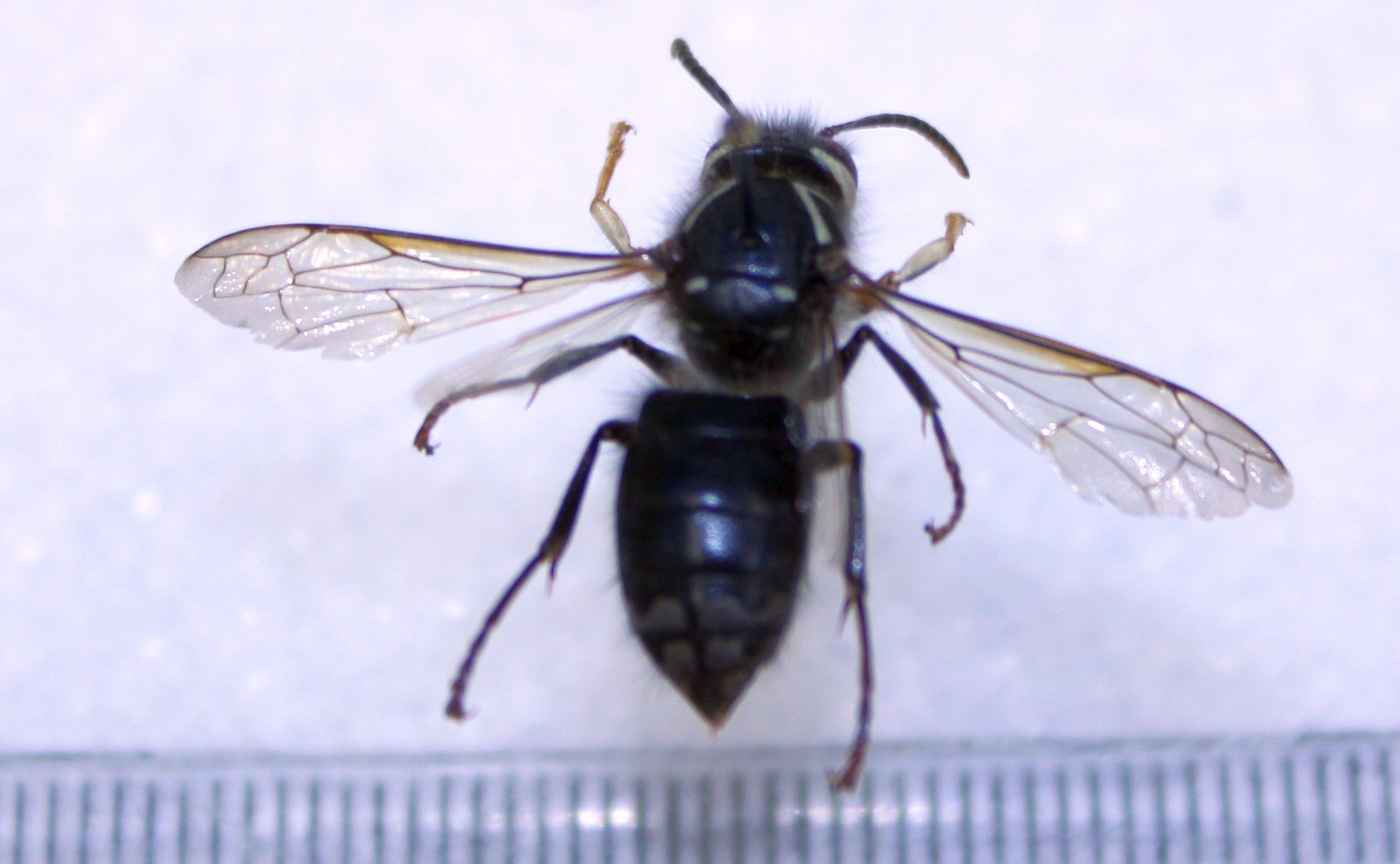
Pompilidae
Pompilidae, in the superfamily Pompiloidea, are the spider wasps. Adult females sting and paralyze a spider, then carry it to a nest where they deposit an egg. Developing larvae then feed on the still-living, but paralyzed spider. A few species are, instead, kleptoparasitoids on other Pompilidae or even ectoparasitoids on spiders.
Pompilidae tend to be dark-coloured with long, spiny legs, and often with smoky wings. The hind femora usually extend past the tip of the abdomen. The pronotum is shaped similarly to that of the Vespidae, and the forewings have three submarginal cells. The most distinctive feature of this family is a transverse suture across the mesopleuron.
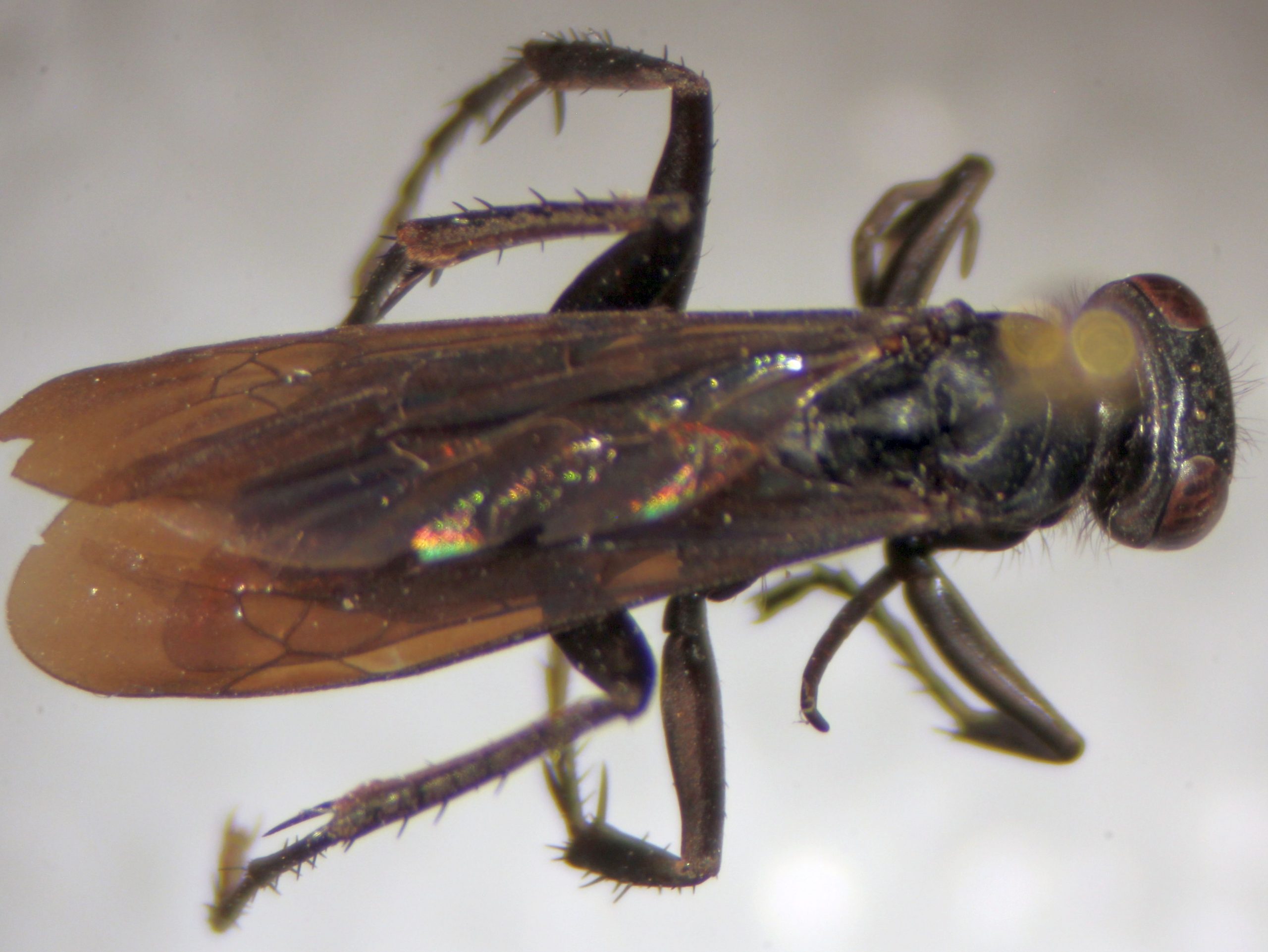
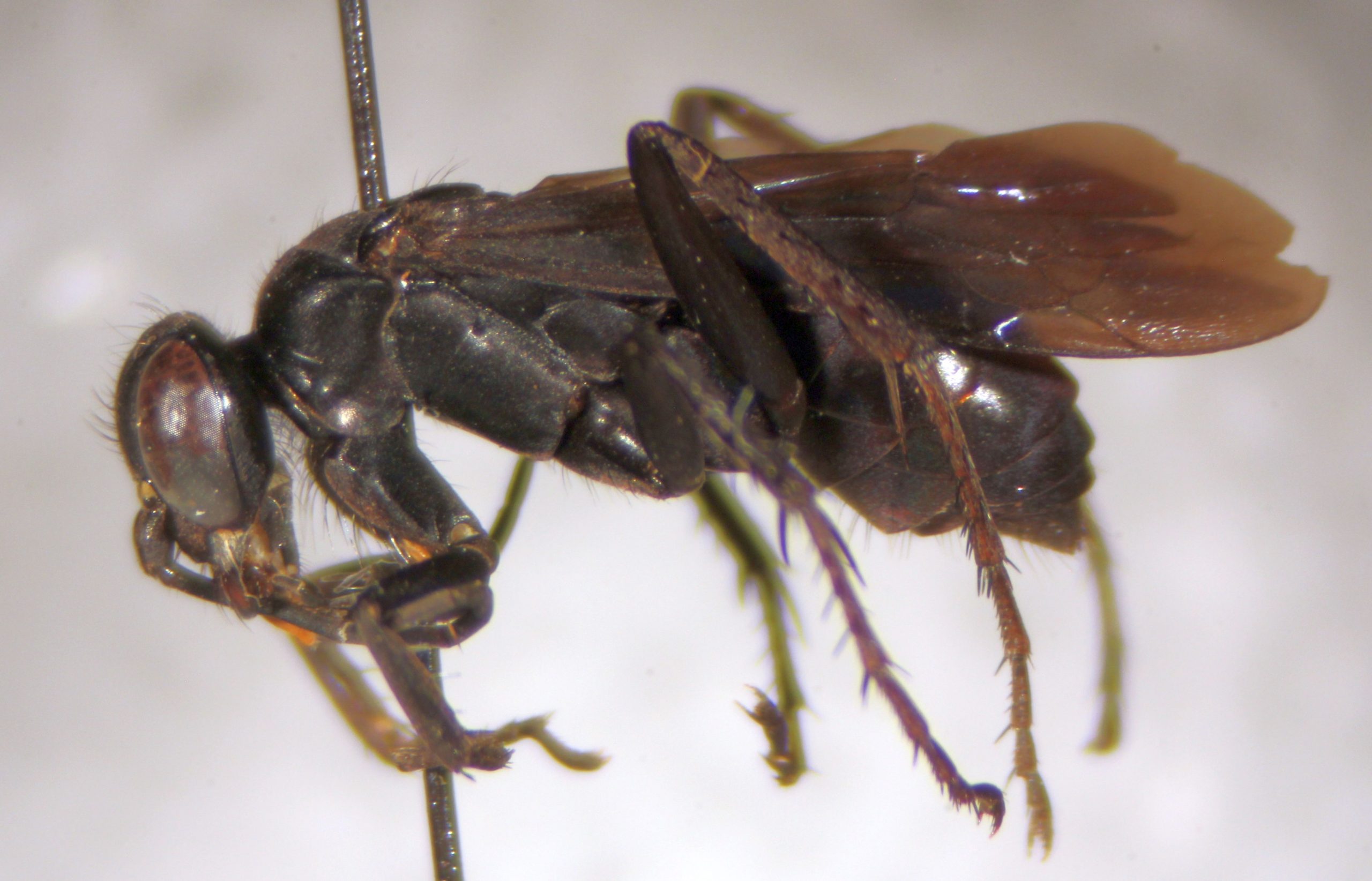
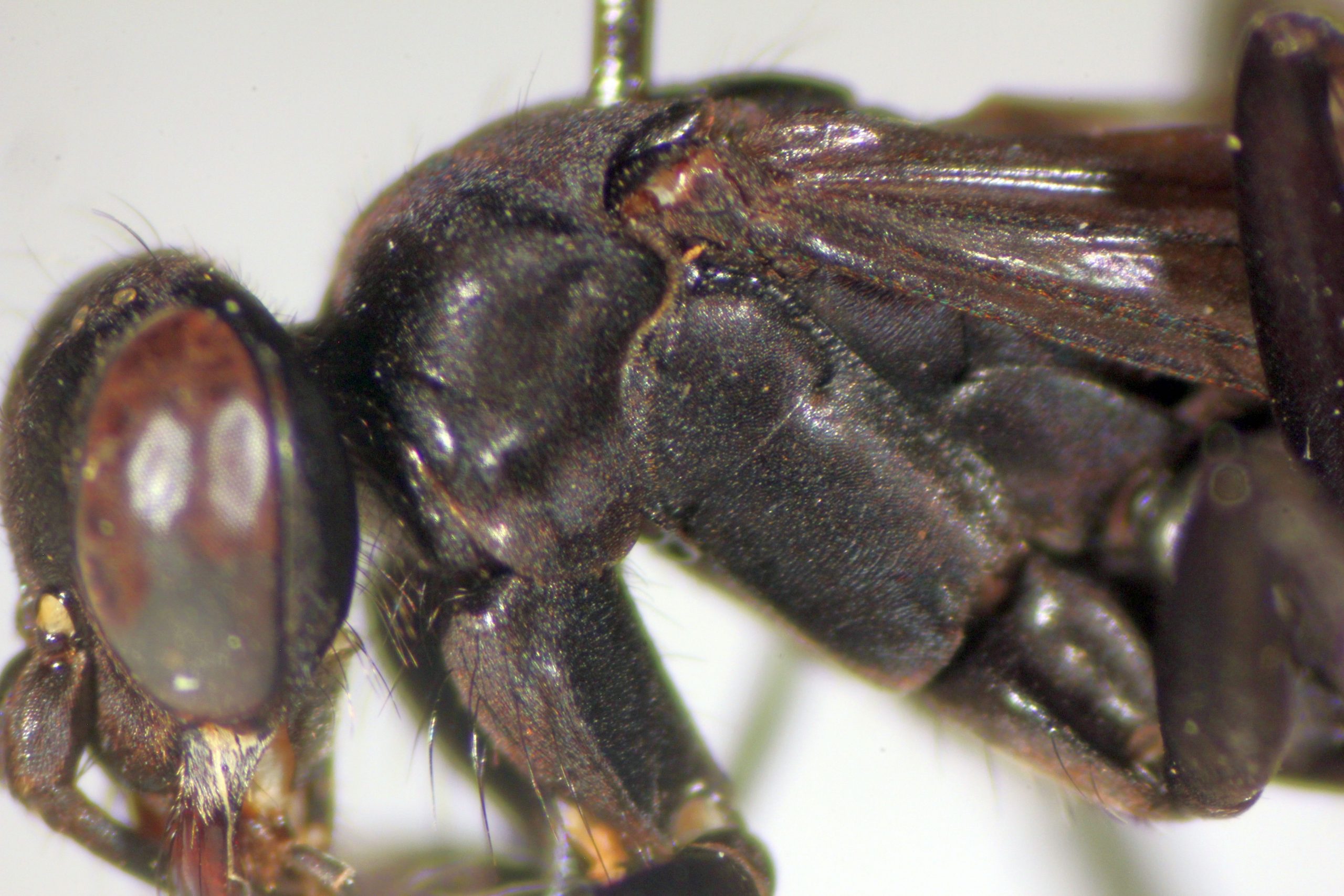
Mutillidae
Mutillidae, or velvet ants, are also in the superfamily Pompiloidea. They are all ectoparasitoids of immature insects, especially bees and solitary wasps. Female velvet ants are wingless, extremely hairy, and very fast-moving. They somewhat resemble very fuzzy ants, but lack the node on the petiole that is characteristic of all ants. They are often reddish in colour. Males are winged and less hairy. This sexual dimorphism has led to difficulties in classification. Like most wasps in these later families, Mutillidae females can and do sting; the sting can be quite painful, depending on the species.
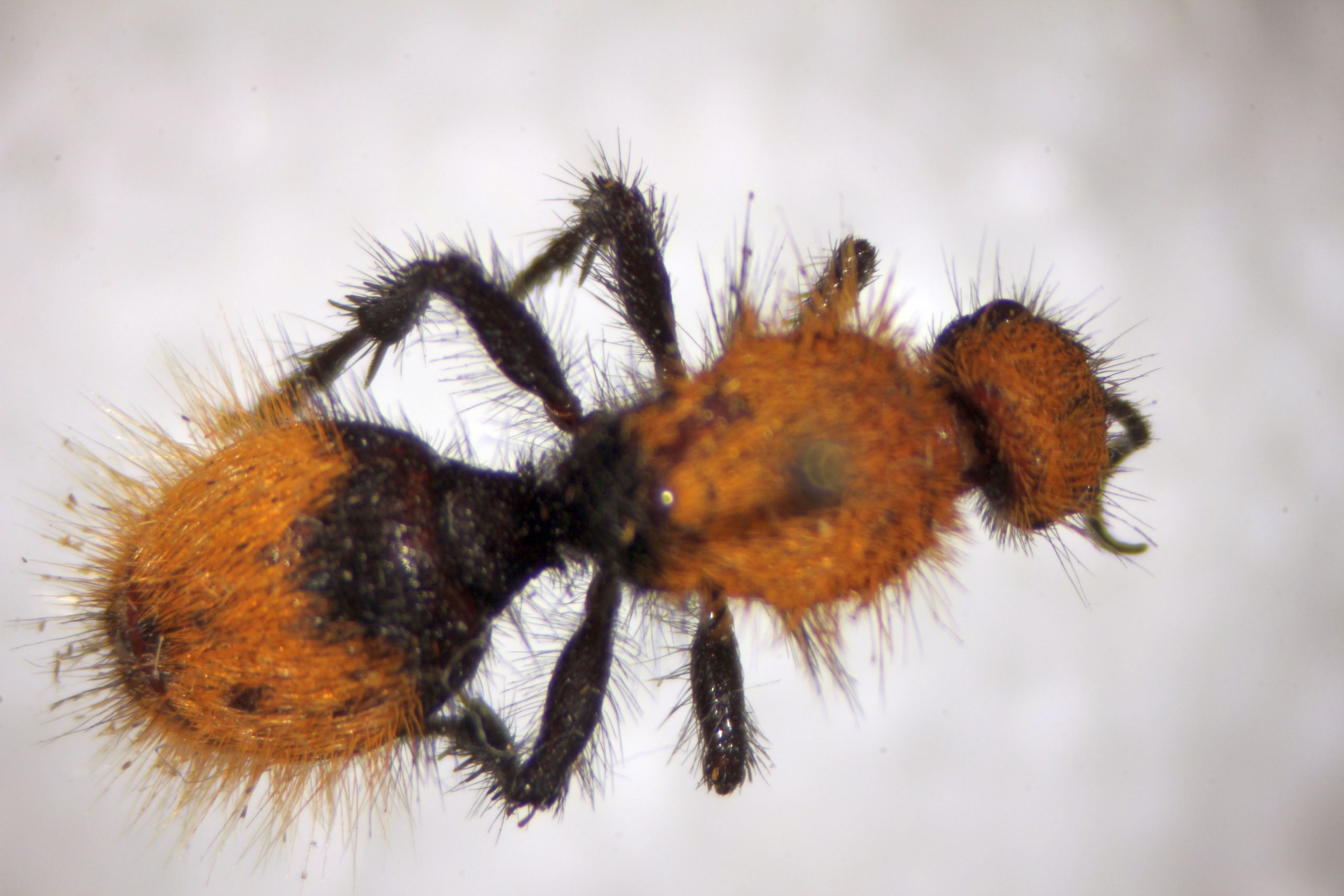
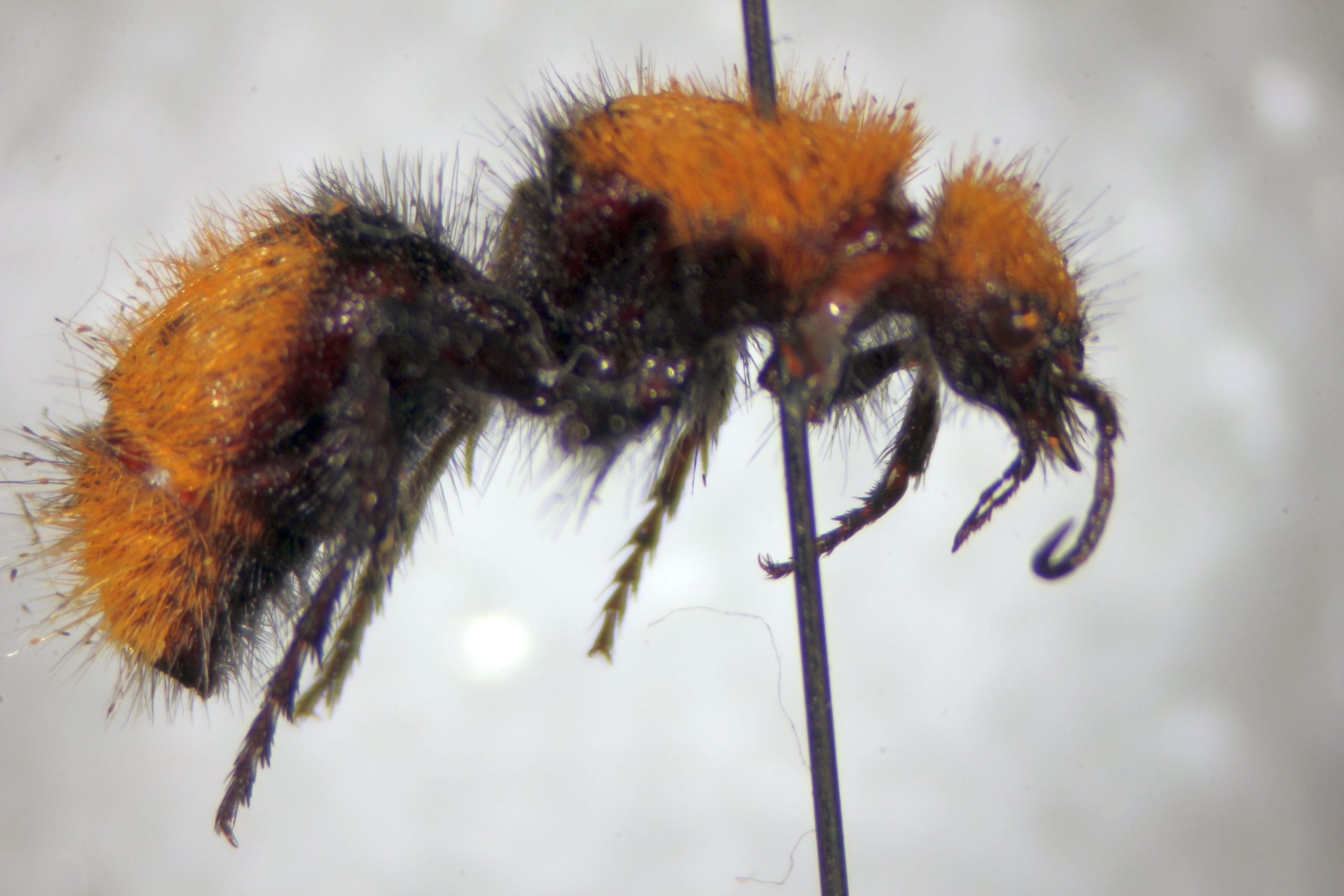
Formicidae
Formicidae, which includes all ant species, is the only family in the superfamily Formicoidea. The entire family is highly eusocial, and colonies can contain multiple castes. Generally speaking winged, or alate, reproductive individuals are produced. Mating occurs during flight, and males die shortly after. Females then land, break or chew off their wings, and find a suitable location to establish a new colony. Offspring of this single mating event are produced over the long lifespan of the mated female, or queen. Once enough individuals of the worker caste are produced, they take over all of the colony duties, while the queen continues to produce eggs. There can be some variations on this generalized life history as well.
Ants are usually readily identifiable. They have elbowed, or geniculate, antennae, and a more or less distinct “bump” or node on the petiole, illustrated below. Some subfamilies have an extremely narrow third abdominal segment, which also forms part of the petiole.
Formicidae is an incredibly diverse family. Their nest sites are often in soil, leaf litter or dead wood. In the tropics, some species are arboreal, or build temporary “bivouacs”. Food sources are equally divers. Ants are important predators on other arthropods, but some species cultivate symbiotic fungi, or supplement their diets to various degrees with plant or insect secretions. Some will tend aphids and other plant sap-sucking insects in order to harvest the “honeydew” overflow. They are vigorously defensive of their colonies and the resources needed to sustain them, and are often capable of both biting and stinging.
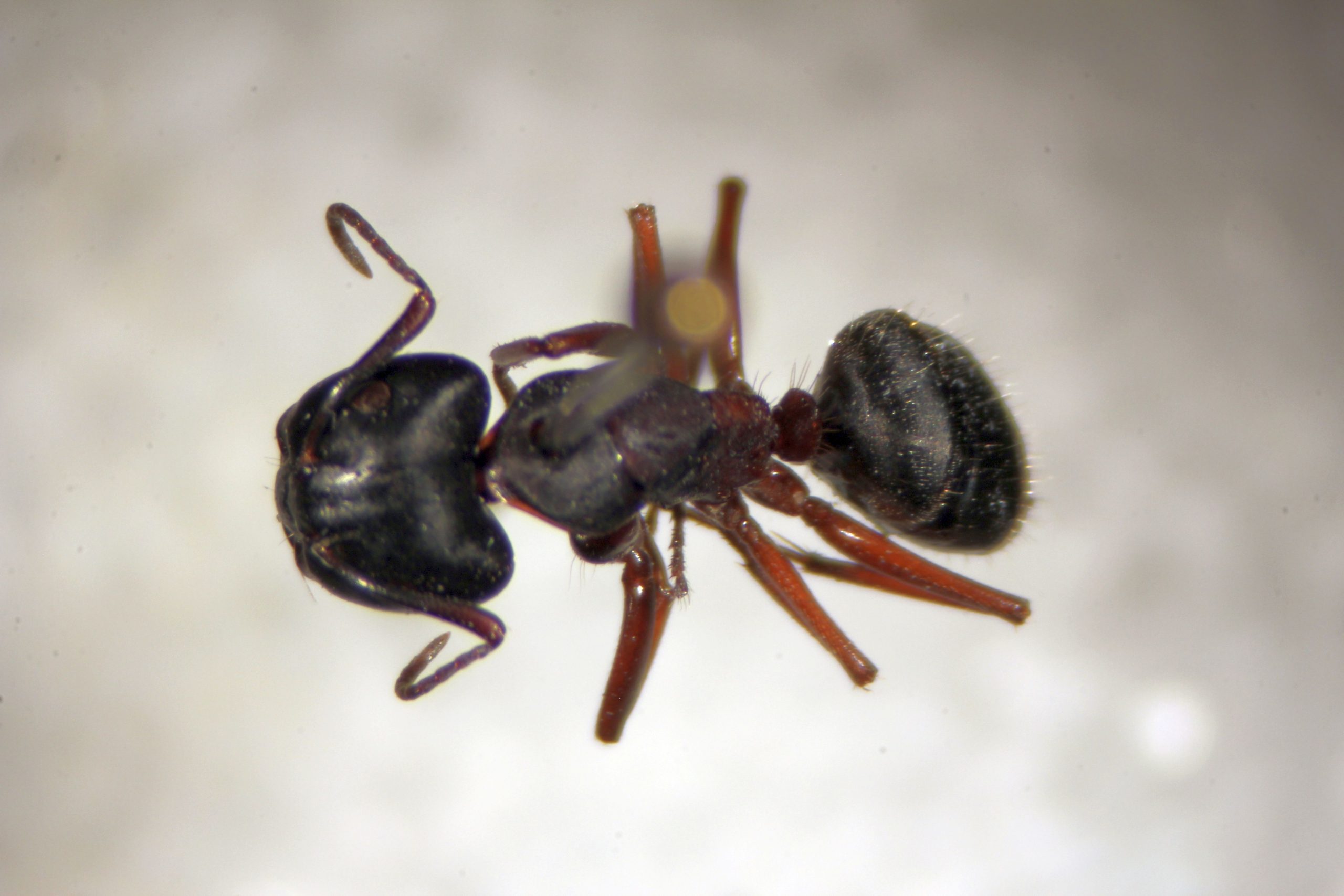
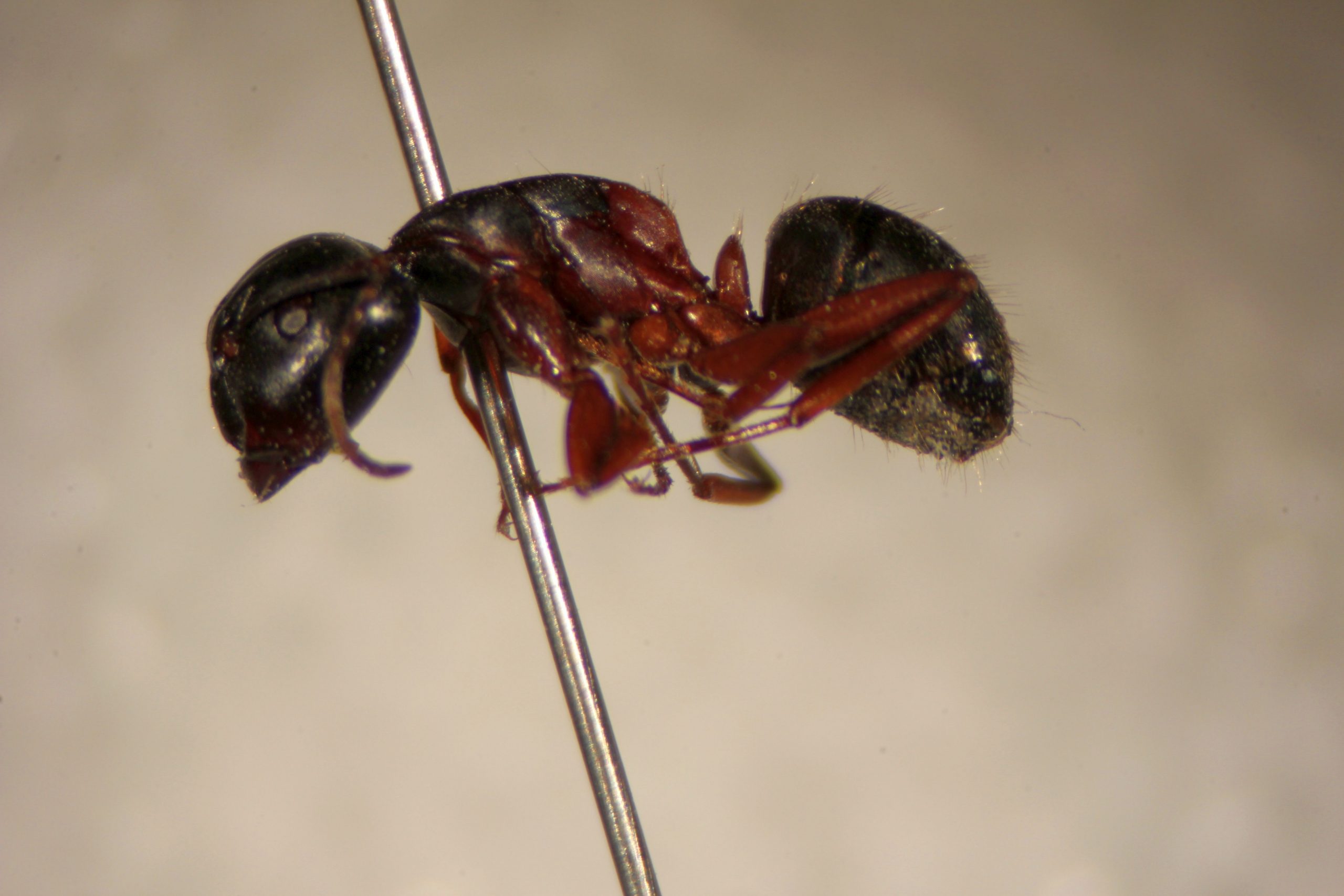


Feedback/Errata